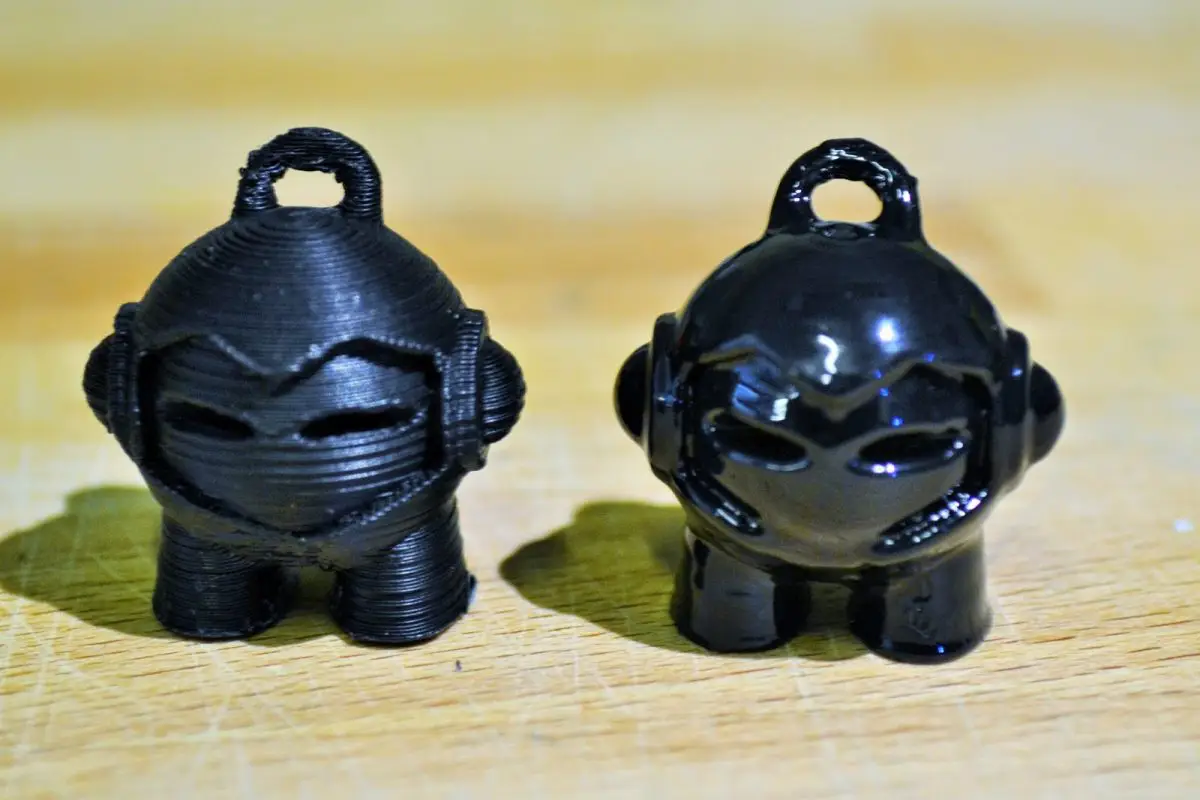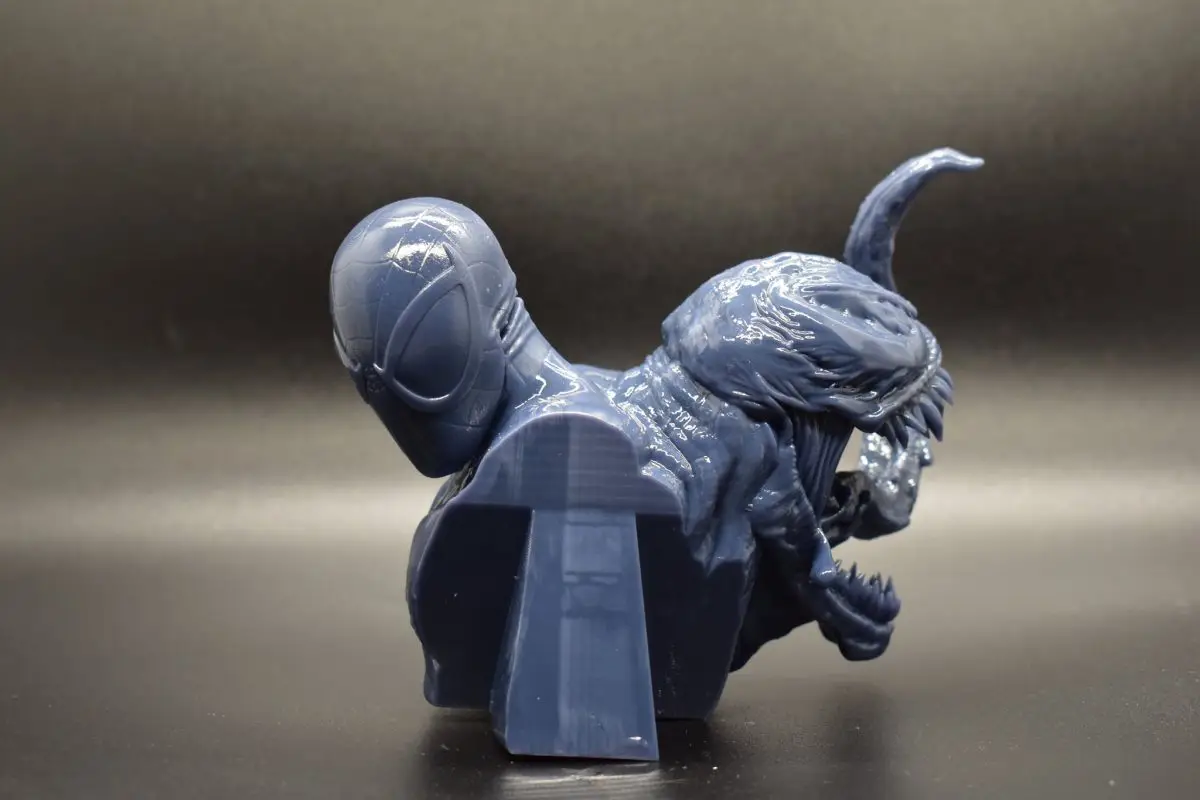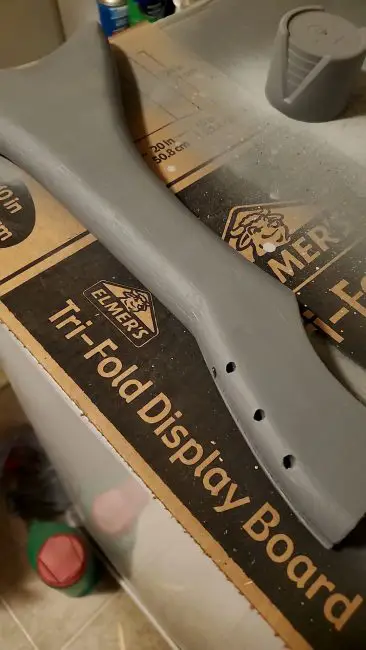
PLA Smoothing
No matter how good your 3D printer is, I think everyone knows how annoying layer lines can be. Most, if not everyone who uses a 3D printer is familiar with PLA filament and the stringing and little “zits” that can pop up no matter how tuned in their printer seems to be. That’s where PLA smoothing comes in. The only problem is that PLA is more difficult to smooth than ABS, and that’s going to be an obvious issue if your goal is to use PLA. As such, we’ve decided to create this article to let you know about the best ways of smoothing 3D prints to help your own PLA prints to look as smooth as they can possibly get.
Let us be clear about one thing before we go on: there are multiple ways in which you can get smooth 3D prints. We’re going to cover the best and safest ways of getting your 3D print that smooth surface you want. You’ll notice that we haven’t only focused on methods for smoothing PLA with heat but also offer other effective solutions you can utilize.
Must-Have Safety Equipment
We may be telling you all about the best ways of smoothing PLA, but no matter which one you choose, safety always comes first. We’re going to tell you all about the basic items that you’ll need before you begin this process.
Thankfully, none of these items are particularly expensive and all of them are quite easy to find. We advise using these if deciding to use the solvents method. Get them first and save yourself the unnecessary risk:
- A lab coat. This will prevent any substance from falling directly on your clothes or skin
- You can also get a lab apron if you want to be extra careful. These are made of flame-resistant materials, which will help if you’re going to be smoothing PLA with heat
- A pair of gloves. These are necessary no matter which method you choose
- You will also need a pair of protective glasses to prevent hazardous substances from reaching your eyes
How to Smooth 3D Prints
As we said, there are multiple methods that you can choose from when looking for ways on how to smooth 3D prints. There are four main methods that we most often use, and these are also the ones that we recommend to our readers.
Even though these methods are generally deemed safe, we encourage you to be careful when smoothing PLA 3D prints.
PLA Smoothing with Solvents
Let’s get this one out of the way first. Whenever you decide to smooth PLA with solvents, you’ll be putting yourself at some sort of risk. As such, this is the method that requires you to be the most careful out of them all.
We advise using ethyl acetate, as it seems to be the less harmful of the bunch we looked into.
Glove and eye protection are a must. We would advise butyl rubber gloves as ethyl acetate will eat right through latex or nitrile gloves.
You need to be extremely careful as ethyl acetate is a highly flammable liquid. In addition, It also causes slight irritations to the eyes and airway and can cause serious issues to the central nervous system. It also damages your lungs in high concentrations so be sure you have great ventilation within your workspace.
Solvents will help you smoothing PLA and they will simplify the process, but they are also hazardous to work with. Now, they do have their advantages, though: they will preserve the print’s original color, and it’s the fastest way to smooth PLA by a long stretch.
Unfortunately, due to the risk, we decided not to test this ourselves. There are plenty of videos on youtube that could help with the steps necessary to accomplish this task.
Smoothing PLA with heat is a much safer choice, and we will cover that next.
Using a Heat Gun on PLA 3D Prints

You’ve probably heard of smoothing 3D printed pieces with a heat gun, and this is the best way to do it. Let us be clear: it doesn’t work well for all types of prints and you may struggle to smooth 3D prints with heat as it requires you to have a decent amount of patience.
Also, it’s not the best way to do it. Let’s be honest: when you use a heat gun on a PLA 3D prints, most of the time it just causes the item to become saggy or soft, but it doesn’t really smooth it. We’re not sure why it’s so commonly said that smoothing PLA with heat is a good idea. There are much better ways to do it!
You can try it yourself and test it out. Just remember not to crank up the heat too much or else your PLA print will soon become a melted mess!
It’s especially important to work in a well-ventilated space for this technique because heated plastic can potentially emit harmful fumes.
PLA Smoothing with Epoxy

Epoxy resin is a fantastic choice for smoothing PLA, and it’s also much safer than using solvents, as well as more effective than using a heat gun to smooth PLA. The best thing about epoxy is that it gives your prints a good-looking glossy finish, plus it also makes the print stronger with the added layer of epoxy applied to the PLA.
We advise using nitrile gloves and eye protection when using Epoxy. Latex gloves do NOT work.
You cannot use epoxy on prints that require detail and precision, though. Remember that epoxy resin adds an extra layer to what’s already printed. Also, when you smooth PLA with epoxy, it’ll be harder to sand than with other methods
You will want to let the epoxy cure for at least 24 hours. Once it is dried you can decide to sand it, leave it as is.
Use an Air Eraser for PLA Smoothing
An Air Eraser is a surprisingly powerful tool that’ll help you to smooth PLA and get rid of layer lines. It’s great for parts that are hard to reach, but most importantly, using an Air Eraser to smooth PLA is one of the fastest ways in which you can do it. Be careful not to overdo it, though!
You may want to get your hands on a quite abrasive blaster if you intend to work with resistant parts, but you’ll need a lighter one if you’re working with light parts, or else they can break down easily. I’d recommend a mixture of silicon dioxide and aluminium oxide as an abrasive with a grain size of 0.2 to 0.5 mm and pressure around (115 psi).
Sanding & Priming

Pre-sanding and then sanding your PLA prints with sandpaper may take a while, but that’s going to leave your prints more than ready for you to paint them afterward. The priming process takes a while when you sand a print, but it will make your print look really smooth and helps get rid of those pesky layer lines.
In fact, even though this method is the slowest, it also produces the best results!
PLA Smoothing – What You Must Know
You now have a 3D printed item in your hands, but you’re not sure what to do next. Don’t worry, here are the things you must know about smoothing a 3D print.
What Does it Mean to Smooth PLA?
PLA Smoothing is the process of smoothing the edges and rough areas of PLA 3D printed items to make them look smoother (might be obvious), easier to prime, sand, and paint. It also is a method of getting rid of annoying layer lines. We’ve told you about the ways in which you can do this, but you need to be particularly careful when doing so as to not damage the 3D print.
Why Should You Smooth PLA?
There isn’t a single reason why you should smooth your 3D prints. On the contrary, it’s such a unique thing to do for specific prints that call for it, that there are actually many reasons why you should do it. Here are the most common reasons as to why you’d want to smooth your PLA prints:
- Smoothing PLA improves the appearance of certain 3D printed pieces
- Manually smoothing PLA makes it possible to use less resource-demanding parameters during the printing process
Why You Need To Be Careful When Smoothing PLA
Certain smoothing PLA techniques can be dangerous if you don’t take proper care when doing so, no matter the process that you ultimately opt for. However, if you’re going to be working with heat or smoothing PLA with solvents, you will need to be extra careful not to cause any damage to your lungs, skin, or eyes.
PLA 3D prints, and 3D prints in general, need you to be particularly careful when smoothing due to the nature of the methods.
Does Every 3D Print Need to be Smoothed?
Generally speaking, no not every 3D printed item needs it. However, the process of 3D printing, as modern as it is, isn’t perfect. Smoothing specific 3D print can make them look unique and certain prints it will enhance the final look of the item.
What is the Most Effective Way to Smooth an Item after 3D Printing?
The most effective way to smooth an item depends on the materials and tools that you have available at home. The safest method is probably the air eraser / sand blaster. I would give that a shot first if you have one you could use to get smooth 3D prints.
Can You Paint a 3D Print as Soon as You Smooth It?
Again, it depends on the method that you choose. Right after 3D printing, you may smooth a print and get to work with it if you used an air eraser, but you’ll have to let it cool or dry for a bit if you used heat or solvents.
What Items do You Need for Smoothing a 3D Print?
It depends on the process that you ultimately choose for the smoothing of your 3D print. Whenever you opt for 3D printing and subsequent smoothing, though, you will probably need a small knife (recommend an exact knife) regardless of the process that you choose to remove any excess material.
Chemical Smoothing – Indications
You always need to be careful when using solvents or chemicals in general to get a smooth surface on your pla 3D prints. Remember that every 3D print requires a lot of work to be put into it and chemicals may save you a lot of time, but they’re dangerous to work with. Safety always comes first.

Is Smoothing 3D Prints Worth it?
Even the best 3D printers are going to have visible layer lines you may want to get rid of. The process of smoothing a 3D print can enhance it’s finished look, and we’ve told you the best methods to smooth your print safely. Now that you know one of the most fun and interesting aspects of 3D printing, it’s time for you to get down to business.
Choose the safest method(s) that provide the best results for you (we really recommend sanding & priming or an air eraser) and watch the uniqueness of your 3D printing increase tenfold!
Recommended Reading
How to Clean 3d Printer Bed (Full Guide)
If you continue on you’ll see I have compiled a list on how to clean 3D printer bed and the most useful tactics to accomplish this task.
Miniature Storage Solutions – A Complete Guide to Miniature Storage
We’re going to present you with miniature storage solutions for various types of collection sizes, games, and different types of minis!
Extruder Calibration – is it Worth it?
You might think it's a hassle to do extruder calibrations. But what if we tell you this process has vital benefits for your printing performance?
What’s The Difference Between PLA Vs PLA+ (PLA Plus)?
let's look in more detail at the PLA filament type in this article and how it compares up to PLA+, the supposedly new and enhanced filament.
PETG vs PLA Filament: What’s the Difference?
What are the main advantages and disadvantages when it comes to PETG vs PLA filament? Let's jump into it!!
3D Printing Service, is it Worth it?
What is a 3D Printing Service? 3D printing services serve the purpose of helping you print anything that you like with professional input.
